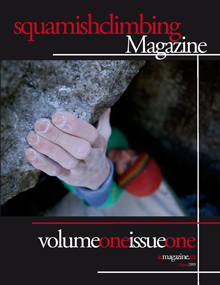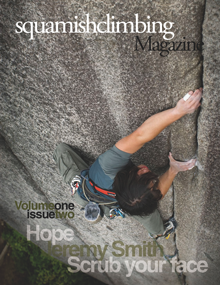Interesting article on bolt replacement in North America by Outside Magazine and Shelby Carpenter.
One day last March, 44-year-old Scott Sederstrom was climbing in the Owens River Gorge, a popular sport climbing area just outside of Mammoth, California, using an advanced technique called rope-soloing, which involves a climber clipping each bolt above with a stick-clip, then unclipping from the bolt below. About 25 feet off the ground, while clipped into the third bolt, Sederstrom was scaling an arête when the bolt snapped in half and pulled out of the rock. Sederstrom tumbled down, hit the ground, and was killed, likely due to head trauma. (He was not wearing a helmet.)

Sederstrom’s body was found by Inyo County Search and Rescue the next morning, after his fiancé became concerned and drove to the crag, where she found his van and dog in the parking lot. Upon inspection, it was found the bolt that failed was an old 3/8-inch buttonhead. It was likely placed over 20 years ago, had corrosion hidden beneath the surface, and could have been partly fractured before Sederstrom ever clipped to it.
The way Sederstrom was rope-soloing, which left him relying on a single bolt instead of on multiple points of protection, is inherently riskier than typical sport climbing. But his assumption is shared by every sport climber at the crag: Bolts are safe. Modern ones—typically made of stainless steel—are designed to withstand upwards of 3,300 pounds of outward force and more than 5,600 pounds of downward pull. But bolts wear down and corrode over time, and even the most expertly placed ones eventually need to be replaced.
There are roughly 60,000 sport routes across the U.S., roughly a third of which were put up in the late 1980s and early 1990s, according to Nick Wilder, co-founder of Mountain Project. The bolts on these routes are now reaching the end of their projected lifespan—roughly 20 years—and may or may not be safe to climb on. In fact, there are likely hundreds of thousands of bolts that will need to be replaced in the not too distant future, according to Brady Robinson, executive director of the Access Fund, which works to open up climbing areas across the country to the public. To chip away at the issue, the fund and the American Alpine Club last month announced a $10,000 round of funding through a new program called the Anchor Replacement Fund. Seventeen climbing organizations nationwide received a portion of that money for bolt replacement.
For the full article from Outside Magazine, please click here.












